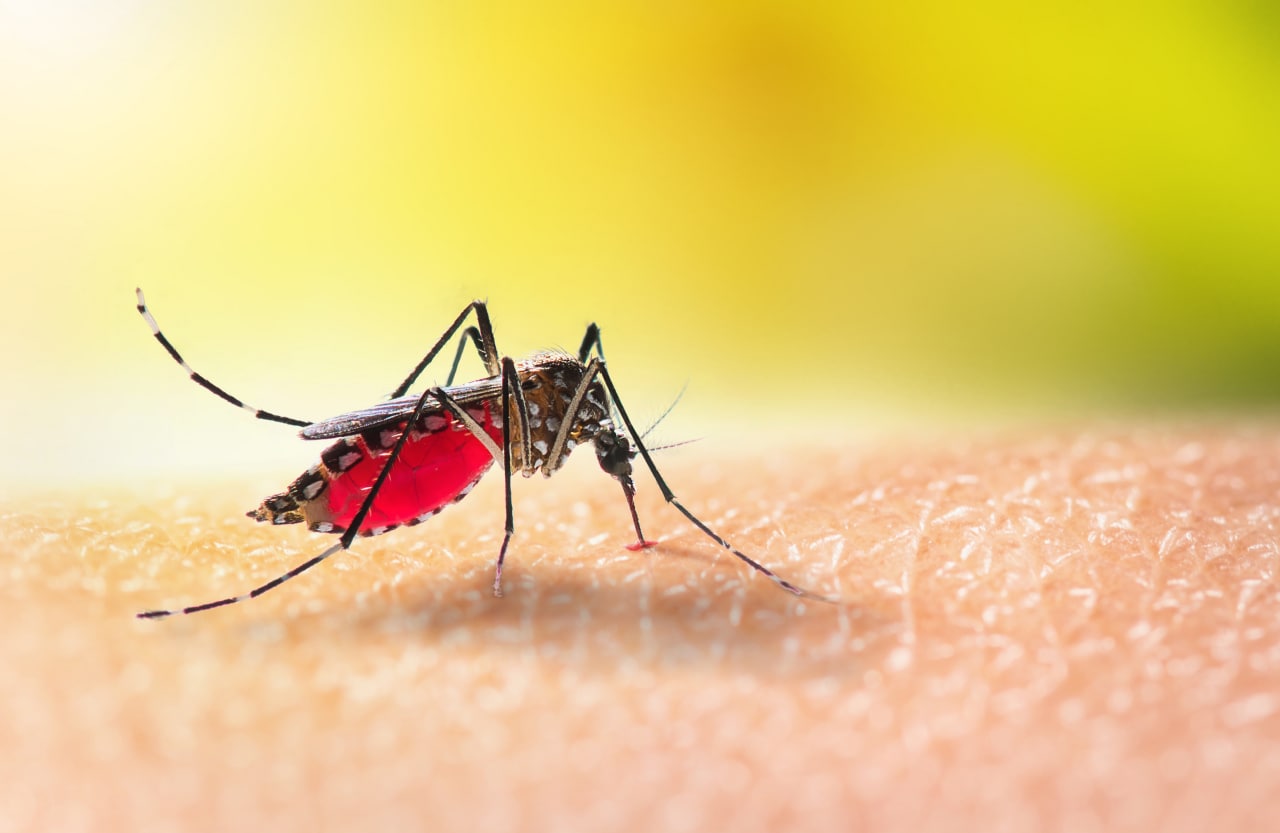About Malaria
Malaria is a serious and sometimes fatal (life-threatening) disease caused by parasites that are transmitted to people through the bites of infected female Anopheles mosquitoes. In general, there are five parasites species of which two of them are considered to pose greater threats to humans i.e. Plasmodium falciparum and Plasmodium vivax.
Epidemiology
In 2020, there were an estimated 241 million cases of malaria worldwide. The estimated number of malaria deaths stood at 6,27,000 in 2020.
Similarly, In Nepal, the incidence of malaria has now been reduced to 4,000-5,000 cases from about 15,000 cases annually. 5 out of the total population of 22.8 million, 73% (16.4 million) living in 65 districts of 5 developmental regions of Nepal are at risk of malaria.
Key Facts About Malaria
· Malaria is spread by the Anopheles mosquito that is infected by a parasite. The disease is both preventable and curable.
· Malaria-causing parasites breed mostly in warmer climates, where humidity and rainfall are abundant (richly supplied).
· Globally, malaria exists in 103 countries affecting 3.3 billion people of which higher death rates (90%) have been recorded in sub-Saharan Africa. Among them, the majority are children under five years of age.
· The incubation period of P. falciparum infection is usually 12 to 14 days (varies from a week to a month). Some rare malarial parasites such as P. malariae remain inactive for long periods and may not show symptoms/illness in the human body for up to 4 years.
· People traveling from areas without malaria often have no immunity and are prone to illness. Prevention is possible if you visit your primary care physician.
· Malaria is not a contagious disease. A person does not get malaria if he/she comes in contact with infected people.
What causes malaria?
Malaria can occur if a mosquito infected with the Plasmodium parasite bites you. There are four kinds of malaria parasites that can infect humans: Plasmodium vivax, P. ovale, P. malariae, and P. falciparum.
P. falciparum causes a more severe form of the disease and those who contract this form of malaria have a higher risk of death. An infected mother can also pass the disease to her baby at birth. This is known as congenital malaria.
Malaria is transmitted by blood, so it can also be transmitted through
· an organ transplant
· blood transfusion
· use of shared needles or syringes
Mode of Transmission
Symptoms of malaria
Common symptoms of malaria include:
· shaking chills that can range from moderate to severe
· high fever
· profuse sweating
· headache
· nausea
· vomiting
· abdominal pain
· diarrhea
· anemia
· muscle pain
· convulsions
· coma
· bloody stools
Children versus adults –
Clinical manifestations of malaria vary between children and adults. Seizures and severe anemia are more common in children, whereas hyperparasitemia, acute renal failure, and jaundice are more common in adults.
Cerebral malaria (with coma), shock, acidosis, and respiratory arrest may occur at any age. It can be difficult to distinguish congenital malaria infection from malaria infection acquired as a newborn. Among infants with congenital malaria, the onset of clinical manifestations usually occurs at two to eight weeks of age; signs and symptoms include poor feeding, fever, vomiting, diarrhea, and irritability. Anemia, thrombocytopenia, and hyperbilirubinemia are common.
Diagnosis
Malaria parasites can be identified by examining under the microscope a drop of the patient's blood, spread out as a “blood smear” on a microscope slide.
A rapid diagnostic test, also called RDT or antigen testing, is a quick option when blood draws and smears aren't available. Blood taken from a prick on your finger is put on a test strip that changes color to show whether you have malaria or not.
Treatment
The complex nature of the malaria parasite has a strong capability to evade the human immune system resulting in the failure of vaccine development worldwide. However, researchers and vaccine developers have been still working on several approaches to test and discover the malaria vaccine.
Malaria is treated with prescription drugs to kill the parasite known as Antimalarial drugs which are to be taken under a doctor’s prescription. Preventive Measures
Preventive Measures
Some of the main methods of prevention are:
1) Insecticide-treated bed nets:
Insecticide-treated mosquito nets can be a life-saving barrier because most malaria-carrying mosquitos strike at night. It is important that nets are easy to obtain – either at a reduced cost or for free – and that they are built in a way that is appropriate for the local environment. It's also crucial to run awareness campaigns to ensure that they're put to good use.
2) Treating women during pregnancy:
Pregnant women have a poorer immune system than non-pregnant women. Antimalarial medication taken during pregnancy can protect both the mother and the child.
3) Health education:
Improving people's understanding of malaria is an important aspect of preventing malaria mortality. This includes learning how to properly use nets to avoid being bitten, being aware of the symptoms, receiving treatment, the necessity of receiving treatment immediately (especially for children), and completing a full course of medications rather than stopping when you feel better.
4) Environmental methods:
Getting rid of pools of stagnant water, clearing bushes from around houses, and planting lemongrass can all reduce the number of mosquitoes nearby.
What precautions should Malaria Travelers in Nepal take?
When traveling in Nepal, one should avoid mosquito bites to prevent malaria. Travelers may need to take medicine before, during, and after their trip to prevent malaria, depending on their travel plans and destinations. Travelers can have a look at the map that shows the degree of malaria outbreak (high, low, and malaria-free) in various districts of Nepal. It is commonly found in the area with an altitude of less than 2,000 m (6,562 feet), mostly in tropical (Terai) districts across Nepal.
RN Sujata Khatri
Danphe Care
